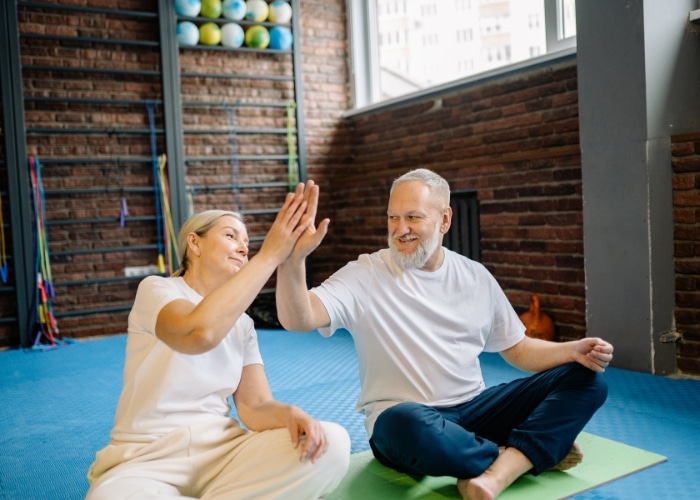
The benefits of exercise are well established – from preventing chronic disease to improving physical function, and enhancing mental health and wellbeing – but it becomes increasingly important as we age.
While we lose muscle at the rate of 8 per cent over our 50s, it begins to decline rapidly as we reach our 70s, making it even more important that we meet the physical activity guidelines set by the World Health Organisation (WHO).
The WHO recommends adults aged over 65 undertake at least 150 to 300 minutes of moderate-intensity aerobic physical activity or at least 75 to 150 minutes of vigorous intensity aerobic physical activity (or an equivalent combination of both) each week.
Older adults should also do varied multicomponent physical activity focusing on functional balance and strength training at moderate or greater intensity, on three or more days per week, to enhance functional capacity and prevent falls.
Community demand
Greater awareness about the health benefits of an active lifestyle can be seen in the increasing number of gyms catering specifically for people over 50, with specific equipment and services, and an age-appropriate culture.
A recent report on fitness industry data from 2023 showed the cohort of people aged over 65 is now the second largest gym user group, after the 25 to 34 year olds.
With the trend of active ageing gaining momentum, most retirement villages are including this health and wellness concept in their offerings to meet demand.
Support for everyone
When planning a health and wellness centre for a retirement village, it’s important to plan for all users.
Rather than fitting a gym with the traditional treadmill, bike and a few dumbbells, it’s worthwhile looking at options that also cater for the novice users, as well as those with mobility issues.
If people aren’t used to regular exercise, it’s important to encourage them to start with small amounts of exercise and gradually increase the frequency, intensity and duration over time, relative to their level of fitness.
While many users opt for independent use, engaging fitness professionals or allied health practitioners at your centre will maximise the benefits of training, reduce incidents related to inappropriate use of equipment and give your retirement village a competitive edge.
Active ageing culture
When analysing the success of gyms at retirement villages, one theme comes out as the clear driver behind high usage – culture.
When the active ageing culture is facilitated by the site’s offerings and nurtured by the staff (village managers, lifestyle coordinators, fitness and allied health staff), it is more likely to get uptake.
At many sites, the gym becomes the social club filled with laughter, and the outdoor activities engage everyone to join in.
Aura by Livewell
A great example of an active retirement resort is Aura by Livewell in Findon, South Australia.
Livewell communities aim to inspire healthier and safer communities and have based their design and services to create retirement resorts that connect all residents.
At their new Aura resort, health and wellness is seen as a high priority. The site includes a pool and a gym fitted with HUR Smart touch strength training equipment, also hosting wide-range cardio equipment, as well as a Senso platform for balance and cognitive training.
While the gym is open to everyone to train independently, the residents are also supported by an in-house exercise physiologist who is on-site three days per week to provide assistance and run exercise classes.
The change from an external provider to in-house staff saw a rapid increase in use as the support became part of the resort’s wellness culture.
Today almost 50 per cent of Aura residents are actively exercising and the number of gym visits has quadrupled in less than a year – demonstrating clear demand and the reason why all retirement villages should consider how they can support healthy ageing at their sites.
Dr Tuire Karaharju-Huisman, Physiotherapist, Accredited Exercise Physiologist www.huraustralia.com.au; www.aurabylivewell.com.au